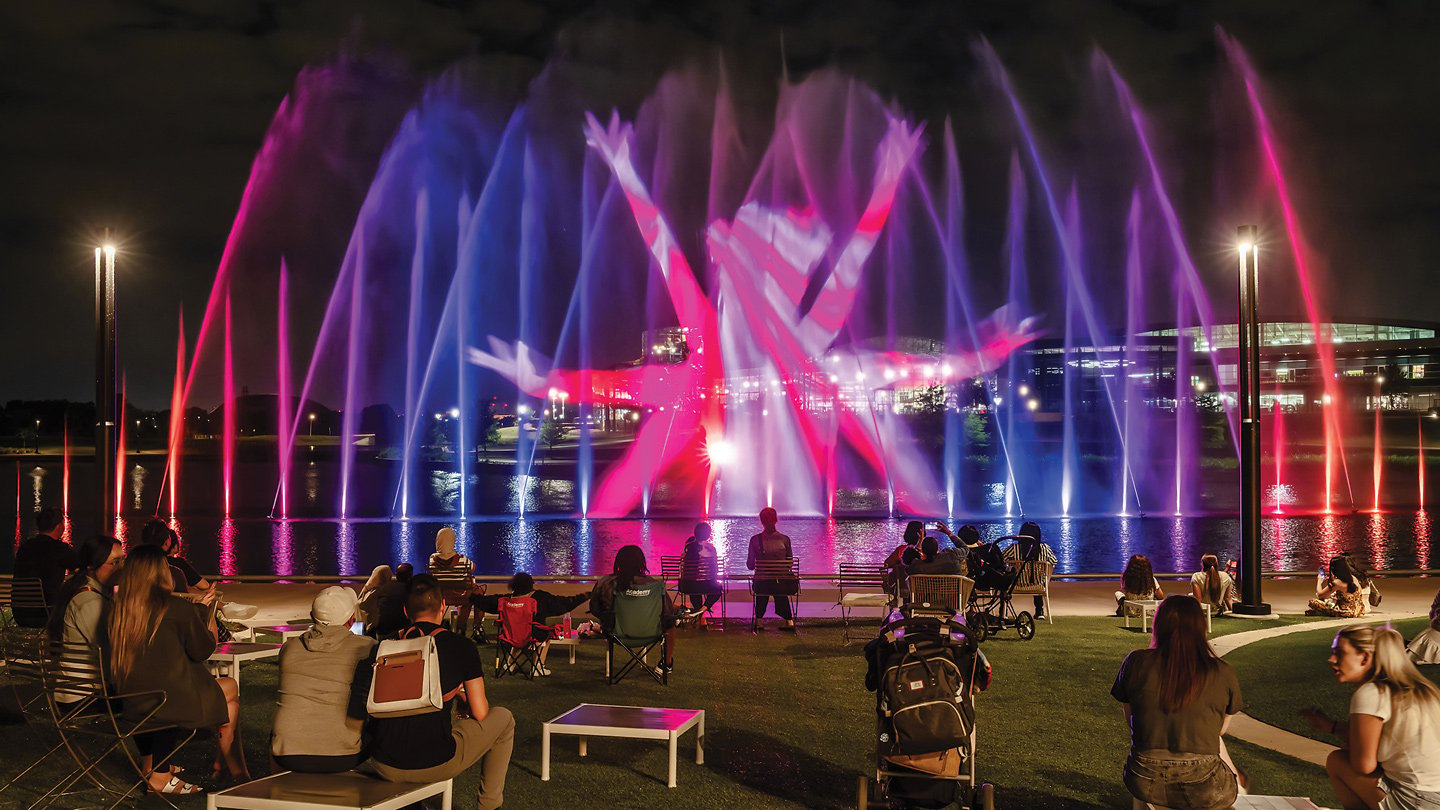
Designing and Delivering AI for Experiential Uses
Water features incorporating the latest technology show promise for increasing visits to retail centers and capturing important data in the process.
As demands for high-quality customer experiences increase, brick-and-mortar retailers are investing in new technology, including artificial intelligence (AI), to differentiate themselves from online shopping and other competitors.
AI-enhanced technologies are popping up in every aspect of retail, from virtual fitting rooms and optimized self-checkouts to smart shelves that light up with suggested purchases. AI technology is helping architects and developers plan more efficient and optimized retail spaces and contributing exciting new enhancements to retail amenities.
Outside the Lines, Inc. (OTL), a design-build construction firm specializing in show fountains and realistic rock work, started to rethink water features for shopping centers and how technology could play a role. The company aimed to create an interactive and engaging amenity that, unlike a splash pad or water park, wouldn’t require visitors to get wet but would provide a unique experience for every visitor, every single time.
From Imagined to Real
The perfect opportunity for OTL to apply its concept arose in 2022 when the company was asked to design and construct a show fountain at EpicCentral, a 172-acre park site in Grand Prairie, Texas. The site was already home to five lakes, and the plan included an entertainment district with restaurants, theme parks and hotels. OTL set out to deliver a show fountain called Illuvia on the largest lake (4 acres) that would interact with the crowd without the need for additional hardware such as wands or touchpads.
As construction began, the team faced some distinct challenges. The dewatering pumps used to drain the main pond were not completely controllable, causing the lake’s water levels to fluctuate during construction and requiring OTL to design a custom barge for the construction and maintenance processes. This necessitated driving piles from the barge and constructing the water feature from barges and boats. The floating barges for the pile and the pile-driving rig were flown in by crane over the active job site — a tricky exercise that required substantial safety protocols.
OTL had been working on a new AI-based technology system called Aquarius Interactive that mimics visitors’ movements, offering a unique and distinctive experience for guests. Aquarius Interactive uses cameras to detect objects and motion, which is then run through its patented AI software to determine what the object is, exactly where it is and what it is doing. The software then uses that information to control the nozzles, lights and water to mimic guests’ movement in real time, so that the fountain is actually interacting with the guests.
When OTL first started designing Illuvia, incorporating an AI system was not part of the plan. After the first iteration of Aquarius Interactive was rolled out, the team realized that due to Illuvia’s large scale, installing the technology with a single-camera system would be inadequate. The expansive curved walkway area in front of the fountain meant that an additional camera was needed and the Aquarius Interactive system had to be adjusted to allow for more inputs. OTL also decided to use internet protocol cameras due to the distance between the cameras and the equipment room. The team built a special equipment room to house the server and the control system for Illuvia, leaving space for additional future hardware as needed.
After its completion in the summer of 2023, the project drew more than 30,000 visitors each week. Wait times at the restaurants with patios facing the fountain climbed to three to four hours in those peak summer months, but visitors didn’t seem to mind because they could watch Illuvia’s spectacular show while they waited.
Large-scale video images are projected onto the spray created by the nozzles and paired with specialty lighting effects and music. In addition, air-fired jets and robotic nozzles propel water to heights of more than 60 feet, creating show-stopping moments that continue to draw crowds at five 15-minute shows each evening. During the daytime, guests can interact with the AI-enhanced functionality.
Looking Forward to the Future
The Aquarius Interactive technology could be used for more than just putting on a show and creating an interactive experience. Because the cameras are capturing motion, they are also capturing important data such as foot traffic volume and length of dwell time. This valuable data can eventually be provided to owners and operators to help gauge and improve traffic flow and assess space efficiency. OTL hopes to make this data available to its customers within the next one to two years.
In addition, the OTL team envisions a variety of creative uses for its patented technology, including wayfinding, maze making and other engagement installments beyond water features. The technology can be integrated into any digital multiplex-controlled system to creatively control water, light, fog and sound or be installed in existing water features for the same types of engagement available at Illuvia.
The possibilities for AI technology in retail centers are virtually endless. Costs vary widely depending on what equipment is already on-site and what needs to be constructed. But with the right idea, team and opportunity, nearly anything is possible.
J. Wickham Zimmerman is the CEO of Outside the Lines, Inc.
Planning With Technology in MindWhen it comes to water features in retail environments, OTL offers the following guidance:
|




